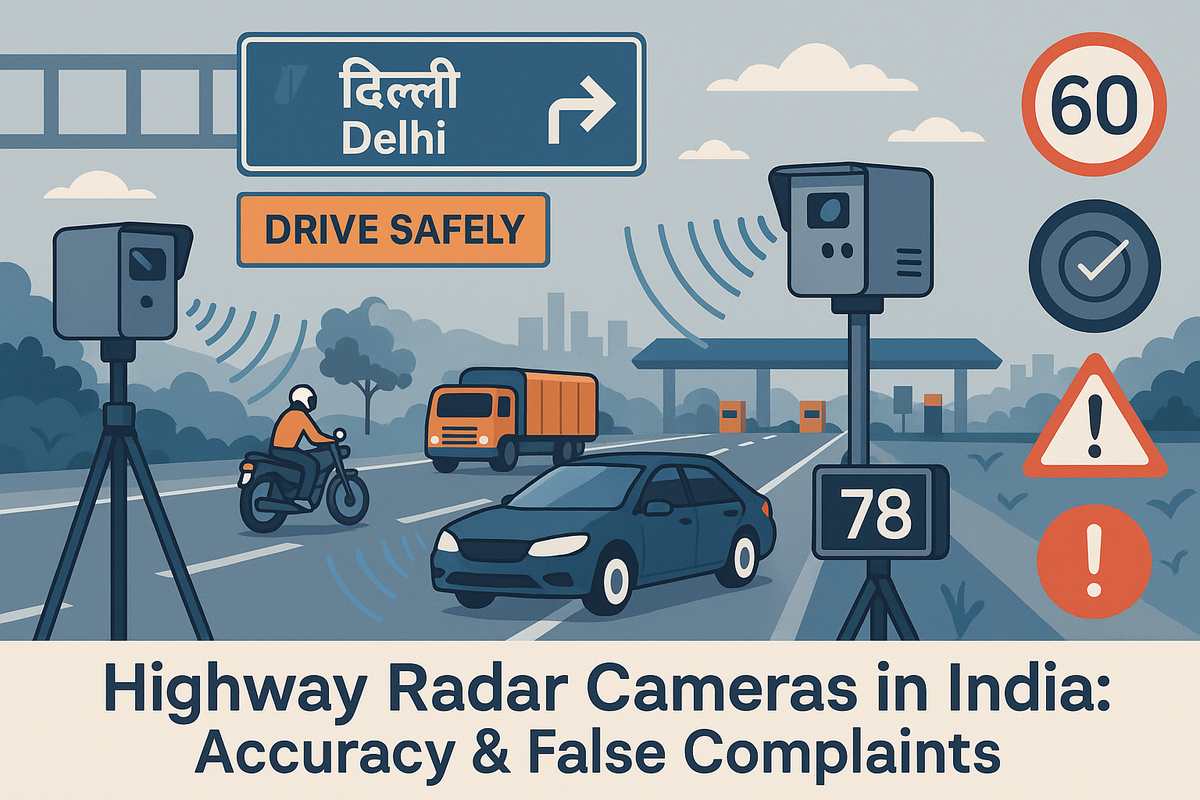Highway Radar Cameras in India: Accuracy & False Complaints
Explore how radar speed cameras work on Indian highways—accuracy, false challans, legal recourse & tips to avoid errors.

Highway Radar Cameras in India: Accuracy & False Complaints
SpotGenie Gyaan dives into the tech, rules, and realities of radar-based traffic enforcement on Indian highways, where accuracy and accountability matter more than ever.
How Highway Radar Cameras Work in India
Radar speed cameras on Indian highways use Doppler radar or LIDAR technology to detect vehicle speed from a distance. These systems, often mounted on poles or mobile tripods, work independently or in combination with ANPR (automatic number plate recognition) to capture violations. The rise of AI-enabled camera networks means some systems now detect over-speeding, lane discipline, and seatbelt violations in one pass.
From July 2025, new legal metrology rules mandate that every radar gun used in enforcement must carry certification, ensuring traceable calibration and reduced errors.
Official Accuracy Claims
- Noida Expressway: Radar systems are said to deliver 98% accuracy across 8 lanes, with clear image evidence.
- Dahua 3D Radar: These AI-powered systems claim 99.8% accuracy, especially for “section speed” enforcement, where average speed is calculated between checkpoints.
- Bengaluru-Mysuru Expressway: AI cameras were recently added to curb habitual speeding and provide real-time alerts to police teams.
Reported Errors & False Complaints
Despite advancements, many motorists report questionable fines:
- Bengaluru: AI cameras flagged seatbelt violations inaccurately due to color mismatch or reflection. Manual validation is now standard, improving approved fine accuracy to 99.9%.
- Highways: Drivers report being fined for exceeding limits by only 1 km/h—sometimes in hidden or unsigned enforcement zones, creating distrust.
Calibration & Manual Review Protocols
To reduce false challans, the Government of India has enforced legal metrology calibration for speed guns starting July 2025. Enforcement agencies must also undergo periodic certification to maintain standardization.
In many cities like Bengaluru, every AI-generated violation undergoes human review before a challan is issued, ensuring context like seatbelt visibility, lighting conditions, and vehicle type are factored in.
Motorist Tools & Best Practices
- Use Navigation Apps: Apps like RadarBot, Waze, and Google Maps now offer speed camera alerts in real-time.
- Dashcams with GPS: Can be used to dispute false challans and provide location-stamped evidence.
- Appeal Mechanism: Use traffic police portals or approach Lok Adalats to dispute fines, especially with video/photo proof.
Balancing Safety with Fairness
Speed cameras have been proven to reduce fatal crashes by up to 65% in some global studies. However, their acceptance depends on trust. When users face unjust fines due to technical glitches or poor visibility, it weakens faith in enforcement mechanisms.
India’s move to standardize speed gun calibration and increase manual verification reflects a push for fairness. But transparency, accessibility to appeal systems, and clear signage in enforcement zones remain essential to strike a balance between safety and motorist rights.
Conclusion
Radar speed cameras are here to stay, playing a crucial role in enforcing safe driving on India’s expanding highway network. As regulations tighten and technology improves, both authorities and motorists must work together to ensure these systems are accurate, fair, and transparent. Have you experienced a questionable speeding challan recently? Share your story with SpotGenie Gyaan, and let’s keep the roads safe and just.
Follow us on:
🅾 Instagram |
ⓕ Facebook |
𝕏 X |
▶️ YouTube |
🟢 WhatsApp



